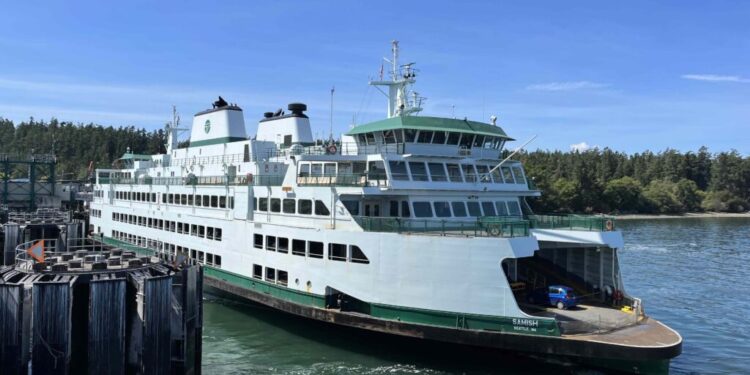Fares for Washington state ferries are set to rise beginning this fall, following a decision by the Washington State Transportation Commission on Wednesday. Passengers will see a 3% fare hike starting October 1, with a second 3% increase scheduled for May 1, 2026. Additionally, the summer surcharge will increase to 35% across all ferry routes next year, and multi-ride passes will have their expiration extended from 90 to 120 days on a trial basis beginning next May.
Commissioner Debbie Young acknowledged that raising rates is never easy, but explained that the revised pricing structure was designed with the intention of reducing the financial impact on regular commuters who rely heavily on ferry services.
The commission also approved a measure that will require public and private bus operators, as well as vanpool and public rideshare services, to begin paying tolls on the State Route 520 floating bridge and the Tacoma Narrows Bridge. This change, taking effect on October 1, follows legislation signed into law by Governor Bob Ferguson earlier this year. Notably, school buses will remain exempt from tolls.
Most of the commission’s focus during the meeting centered on ferry fares. According to the state’s transportation budget, Washington State Ferries must generate nearly $409 million in fare revenue over the next two years to support daily operations. The approved rate increases are projected to bring in approximately $412.3 million.
This comes in addition to a previously approved 50-cent increase to the vessel replacement surcharge, which will double the current fee to $1 per ticket starting October 1. The ferry system is also preparing to introduce a new 3% credit card processing fee starting March 1, 2026. While the surcharge and credit card fee are expected to generate $23.9 million and $7.4 million respectively during the 2025–2027 budget cycle, those funds will not count toward the required fare revenue target, according to commission financial analyst Aaron Halbert.
Fares will still vary depending on the route, vehicle size, number of passengers, and the time of year. The peak season, which runs from May through September, includes an added surcharge on base fares. Under the new pricing model, a standard passenger fare on the Mukilteo-Clinton route will rise by 70 cents this October and another 15 cents in May 2026. Standard vehicle fares for that route will go up 85 cents this fall and an additional 30 cents next spring.
Travelers using the Seattle-Bremerton route will also experience increases: 80 cents more for passengers this October and 30 cents in May 2026. Vehicle fares for this route are set to climb by $1.05 and then by 55 cents. These figures already include the 50-cent vessel levy hike but exclude the seasonal surcharge and credit card fee that will take effect next year. While most routes will see the summer surcharge increase to 35%, San Juan routes will remain at their current 35% rate.
Despite the rising costs, ferry ridership is expected to grow. The agency projects that 2.3 million more passengers will travel via ferry during this budget cycle than in the previous one, a 6% increase. This boost is attributed partly to the full restoration of domestic ferry service, which hadn’t been fully operational since 2019, and to a policy decision by the governor to postpone hybrid-electric conversions for the fleet’s largest vessels in order to keep more ferries running.
Even so, ridership levels are still well below what they were before the pandemic. An estimated 20 million riders are expected in 2025, compared to 24.7 million in 2018 and 23.9 million in 2019.
During the public comment session, Tom Thiersch, chair of the Ferry Advisory Committee on Tariffs, said the committee supported the final proposal. However, he also expressed concern about what he sees as an unfair burden on ferry passengers, who are expected to cover a disproportionately high share of the system’s operating costs compared to users of other public transit systems. He warned that continually raising fares is making ferry travel unaffordable for many and is not a sustainable long-term strategy.







